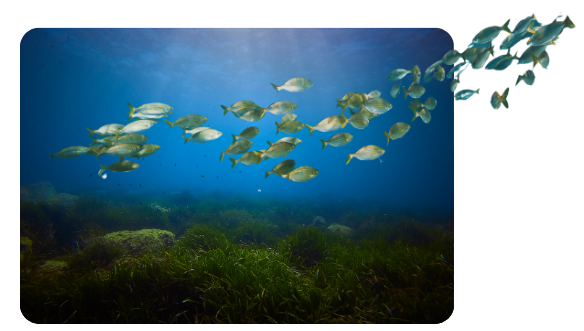
"From an early age I was fascinated by the sea and the way it is driven by the ever-changing weather. Working at PML nearly 25 years has deepened my interest and understanding of the marine environment and I consider myself privileged to be able to continually ask different questions about how things work; and sometimes coming up with the answers. "
Prof. Tim Smyth is the Director of Science at Plymouth Marine Laboratory and has led the NERC funded Western Channel Observatory (WCO) for 19 years. He has a 25+ year track record in hydrological optics measurements and modelling as well as upscaling to the global level using satellite remote sensing. He has published 130 ISI journal articles with two of his most recent articles mapping the global extent of underwater light pollution in the marine environment and the impact of ALAN around global megacities compared with the natural lunar cycles. He has been a Fellow of the Royal Meteorological Society for 30 years.
Since joining PML in 1997 as a data analyst and algorithm developer for the then newly launched SeaWiFS ocean colour satellite, his research interests have broadly encompassed theoretical and experimental atmospheric and in-water optics. He has a strong interest in developing innovative technologies for automated marine measurements including the WCO buoys, ship emissions and atmospheric aerosols.
He has around 280 days of sea-going experience including being Chief Scientist on two Atlantic Meridional Transect (2014, 2015) expeditions between the UK and Falkland Islands.
Education:
- BSc. (Hons) Class I: Physics and Meteorology. University of Reading (1991 – 1994)
- PhD: “Precipitation measurements in convective storms using multiparameter radar”. University of Reading (1997)
Selected Publications
- Davies, T.W., McKee, D., Fishwick, J. et al. Biologically important artificial light at night on the seafloor. Sci Rep 10, 12545 (2020). doi: 10.1038/s41598-020-69461-6
- Davies, TW, Smyth, T. Why artificial light at night should be a focus for global change research in the 21st century. Glob Change Biol. 2018; 24: 872– 882. doi:10.1111/gcb.13927
- T. J. Smyth, G. A. Tarran, and S. Sathyendranath, "Marine picoplankton size distribution and optical property contrasts throughout the Atlantic Ocean revealed using flow cytometry," Appl. Opt. 58, 8802-8815 (2019). doi: 10.1364/AO.58.008802
- T. J. Smyth, G. A. Tarran, and S. Sathyendranath, "Sub-micron picoplankton shape, orientation, and internal structure combined to preferentially amplify the forward scatter," Opt. Express 29, 2014-2024 (2021). doi: 10.1364/OE.413576
- Loveday, B. R. and Smyth, T.: A 40-year global data set of visible-channel remote-sensing reflectances and coccolithophore bloom occurrence derived from the Advanced Very High Resolution Radiometer catalogue, Earth Syst. Sci. Data, 10, 2043–2054, doi:10.5194/essd-10-2043-2018, 2018.
- Smyth TJ, Allen I, Atkinson A, Bruun JT, Harmer RA, et al. (2014) Ocean Net Heat Flux Influences Seasonal to Interannual Patterns of Plankton Abundance. PLOS ONE 9(6): e98709. doi:10.1371/journal.pone.0098709
